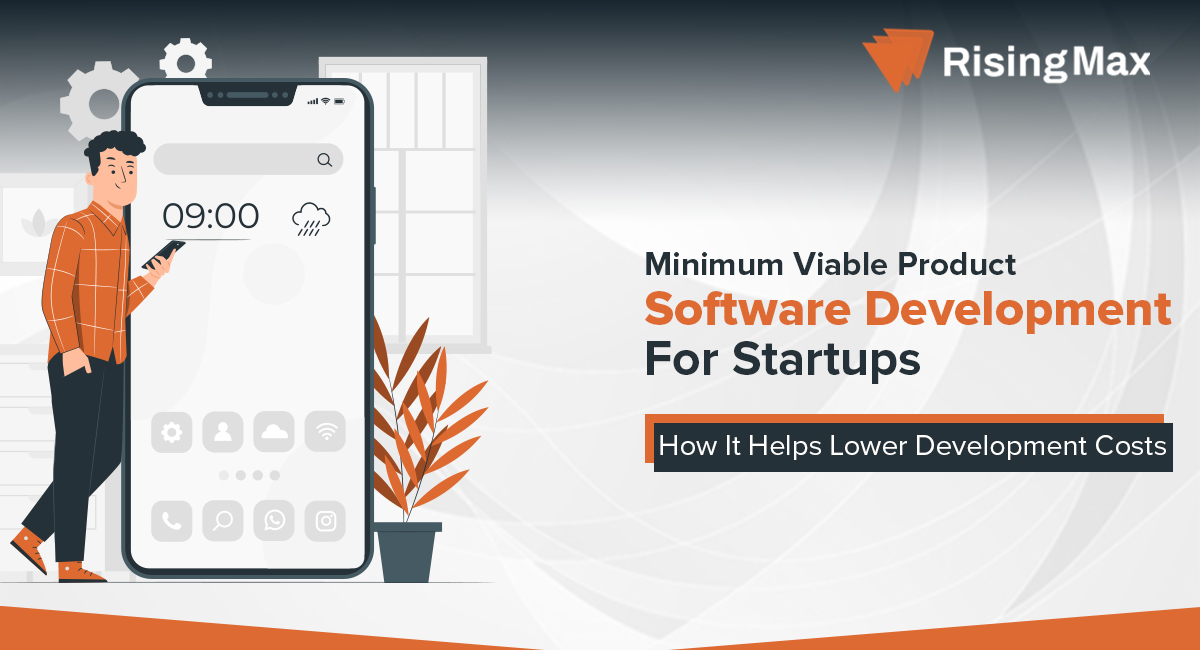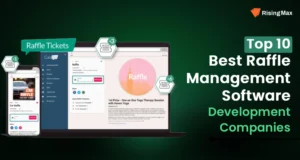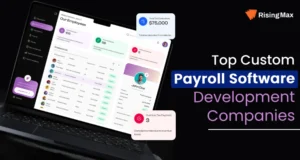Have you ever wondered why most startups fail? Are their ideas are the reason for the failure that seem to be perfect in the starting but can’t fulfill the customer’s demands? Maybe because sometimes it needs some extra effort on the product that pulls it ahead of the competition.
When you’re a startup, it’s not enough to have a great idea in place. To ensure your concept works well and is viable, minimum viable product software development is the key. The meaning is just what it sounds like – An MVP is a development practice in which the product launches quickly with all features with your idea and budget in mind.
It’s fair enough to say that working on a new product development idea can be risky. But if there are reliable MVP software development services to validate your idea, the chances are more towards success. Especially for startups, it’s easy to determine whether their idea is worth investing in or not using such an approach.
Lack of expertise and budgetary limitations are common obstacles faced by startups. So it’s good to contact IT Consulting Company NYC so you can easily overcome early challenges with the very best advice. We work with you to provide a detailed consultation on MVP software development and its aspects. In this blog, we want to share what every startup should know about MVP before building it.

What is “Minimum Viable Product Development”?
The concept of launching a Minimum Viable Product is quite simple. The common goal behind MVP software development is to bring the smallest yet functional version of a business idea to life. You can say something that is tested quickly and easily continues until the product works at its best.
Entrepreneurs can take their keen steps towards developing products in small steps to minimize the risks and save you from overspending.
Why Is There A Need To Build An MVP? Look At These Stats
- More than 30% of firms fail due to a lack of funding.
- Startups that implement MVP scale 20 times quicker than those that do not.
The above Statistics clearly show why there is a need for Minimum Viable Product Software Development. MVPs are becoming increasingly popular in the startup sector, as they have helped several entrepreneurs in this.
In short, Minimum Viable Product Software Development is a terrific way to layout your business idea and evaluate if it works before investing a lot of money. Dig deeper to find out more reasons to craft a Minimum Viable Product.
Benefits Of MVP Product Software Development For Startups
1. You Can Focus On Building The Core Functionality
The MVP strategy is based on the lean startup philosophy, which states that the product should be produced with essential functionality at a low cost and in a short time. Because MVP focuses solely on core functions, development costs may be greatly reduced.
2. Get the Opportunity Of Early User Testing
MVP helps producers to test and prove the product idea during the early stages of development. It’s an excellent opportunity to see if a product resonates with a target audience and to examine how users react to it.
3. Getting Clarity Around Your Product Idea
MVP software development must start with a solid concept that has the ability to entice users. Other features may dominate the core idea while developing a full-fledged product. And you might never find out whether your product idea was a success or not.
With a minimum viable product strategy, you provide the most basic form of your product with the least clutter. It is the main feature that is created by your product concept.
4. You Can Experience Faster Time-To-Market
MVPs take substantially less time to develop, resulting in lower development costs and a shorter time to market. Post Minimum Viable Product Software Development, you can gather customer input and produce a full-fledged product that is ready for market. All of this helps to accelerate your product’s overall implementation.
Collaborate with our MVP Developers to Build Experiences that Deliver Results
Step-by-Step Guide For Custom MVP Software Development
Initiate With Marketing Research and Analysis
It is critical to determine whether your concept meets the market’s requirements or not. Before you start working on MVP software development, you have to ensure it meets the target audience’s demands. And the best place to start with this is by conducting the surveys. Having questionnaires in place will provide you with all the data you need to move towards success.
Share What’s Your Idea Behind Your Product
You must know what your product provides its users and what benefits they will derive from using it. It’s also crucial to consider whether you think users would be willing to pay for the product. You should also be clear about your product’s critical estimations.
The goal of a minimum viable product software development is to provide your user something useful. You may outline where you can add value by knowing your user and market and then create your MVP from there.
Make Sure To Keep The User Flow In Place
Because you’re building the app for your users, make sure to design it in a way that makes it easy for them to use. Examine the app from the user’s point of view, from the moment they open it until they close it.
Prioritize All Features You Want To Add
After you’ve defined all of the steps your consumer will take while using the application/product, you can move on to create a feature list for each of those stages. When you have the complete list of app features, you can further prioritize them based on what’s more important to the user.
When you organize all the features, you can further define their scope and move on to minimum viable product software development.
Take The Final Step Towards Building & Testing
After you’ve determined the scope of work, you’ll need to move on to the MVP software development stage. If your mobile app development company follows the agile technique, there’s a good chance your MVP app will be well-tested and well-designed.
Next, the testing stage is divided into two sections, first, it will be undertaken by QA engineers to enhance the product quality. Whereas the next round of testing is performed by potential stakeholders that are app users who can make ultimate judgments of what features and functionality an app lacks.
Factors Influencing Costs In MVP Development
A good MVP crafted by a top software development company would cost somewhere around 10k to 30k. There are also various factors associated with creating an MVP, or any digital product for that matter.
The majority of the costs associated with MVP software development are similar to those associated with product development. However, you save money on other costs related to completing the product. So, let’s see what all the costs are for MVP development.
Development Team
The expense of Minimum Viable Product Software Development rises with the size of the squad. Furthermore, compared to outsourcing a team, developing an in-house team has a more significant cost. The cost of the MVP is determined by the number of developers on your team. In addition, the expense of designers, testers, and other professionals is increased.
Technology Stack
When it comes to the MVP’s technological stack, one of the most significant costs is planning. The majority of fresh ideas necessitate the use of the most up-to-date technologies. To do the estimate, you must first determine what technology stack you require.
This includes everything from the programming language you choose to the frameworks you use to code the front-end and back-end and any new technology you want to incorporate to improve the features and performance of your application.
Development Approach
The technique that one picks for Minimum Viable Product Software Development is the first component that influences the MVP cost. In-house teams can help create a minimal viable product.
Hiring in-house talent necessitates forming a whole group, technological infrastructure, and a variety of other expenses. On the other hand, outsourcing MVP development entails having an external team handle the entire development process. You save money on all of these expenses.
Designing Costs
While most MVPs lack a finished design, the user interface must be flawless. This necessitates the formation of a design team capable of creating each screen of the MVP. They take care of navigation, button placements, and other details to create a smooth user experience while employing the bare minimum.
This covers one of the most significant costs associated with Minimum Viable Product Software Development. This could include things like:
Wireframing: This is the MVP’s core skeleton, and it includes a wireframe of the pages, how they’re linked, how they’re formatted, and so on.
UX Design: This is where you create the user experience and use the minimum viable product.
Product Design Mockup: A website mockup is an essential part of the MVP design process since it visualizes the idea’s design efforts.
Pages Interaction: The designers consider how pages interact with one another and how to get from one to the next.
Features of The MVP
The features you intend to include in the MVP are the following items to consider when calculating the cost of development. This is where you must rank the elements in order of importance for product development. This can be accomplished by determining the user flow and the influence the feature will have on it. While some functions may be straightforward, others may necessitate the use of cutting-edge technology, which will increase the cost.
A simple e-commerce software, for example, could require functionality like a payment option, add to cart, and so on. On the other hand, a more complicated app may require more advanced technology such as AI, ML, and others. To keep expenses down, make sure the MVP only offers the most important elements for the main product.
Product Complexity
This one is self-evident. The expense of Minimum Viable Product Software Development is directly proportional to the product’s complexity. Creating a simple app with only one screen and a few essential functions would be much less expensive. Simultaneously, your development prices will climb if you’re creating more complex software with various features.
Time To Build
The higher the cost of an MVP, the longer it takes to construct. A basic MVP can be created in four sprints, eight weeks, or two months. Some MVPs, on the other hand, may take longer to develop. To cut costs, you’ll need to discover and recruit a dedicated team that can produce the MVP faster.
Conclusion: Minimum Viable Product Software Development
Minimum Viable Product Software Development has shown to be the most helpful stage in the software development process. To summarize, creating an MVP allows you to test your business idea and assess whether or not a fully complete product is realistic. It also helps you to save a substantial amount of time and money by not purchasing an utterly useless product.
Do you require any assistance in developing a successful MVP? Get in touch with the top Custom Software Development NYC. We at RisingMax will be delighted to assist you in determining your customers’ needs and developing an impactful Minimum Viable Product.












